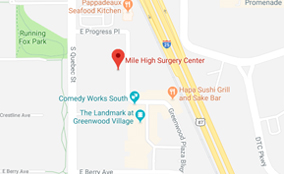What’s New in Sports Medicine?
ACL Injuries in the Pediatric Population
Justin T. Newman, MD
The anterior cruciate ligament has been a focus of sports medicine and orthopedic surgeons over the past decades. Entering those three words into PubMed returns nearly 15,000 peer-reviewed articles on the topic. And the topic continues to expand, with several articles published in the prominent orthopedic sports journals each month.
The ACL consists of two distinct bundles that originate from deep within the lateral notch of the femur and course to the anterior aspect of the tibial plateau. The primary function of this ligament is to provide stability of the knee with regards to anterior translation and rotation of the tibia underneath the femur.
Adult ACL injuries and their treatment are well recognized and routinely addressed. The management of the pediatric ACL injury continues to be defined. The pediatric patient with growth remaining still has growth plates, known as open physes. Damaging this physis could cause disturbances to the growth of the leg, resulting in a shorter limb, or malalingment from a disproportionate amount of growth in the normal, uninjuried part of the physis. In addition, the pediatric ACL injury was historically thought to be a rare occurrence, with the tibial spine avulsion fracture thought to be the more common version of this injury in the younger population.
Several factors have lead to an increased interest in pediatric ACL injuries. The ACL injury in the pediatric population has been diagnosed more frequently, likely due to an increased appreciation for this injury in the younger population and increased education of the providers that treat these patients on a routine basis. There has also been a dramatic increase in the amount and intensity of the activities that the pediatric population is involved with. Children are now involved at a higher level of competition at a younger age, they participate in year-round sports leagues, and there is an increased focus on a single sport at a younger age. All of these factors contribute to younger athletes with a different set of muscle control and balance profiles, being exposed to more frequent opportunities for ACL injury.
These factors have prompted increased interest in the diagnosis and treatment of pediatric ACL injuries. This has correlated with an uptick in the peer-reviewed literature on this topic, and an increase in the innovation of new or modified surgical techniques. The pediatric patient is not a smaller version of the adult – a different approach to avoid a different set of complications and to both prevent and rehabilitate the injury patterns seen in this cohort needs to be taken.
The surgical techniques that have been created to address the special circumstance of the pediatric ACL injury can be seen with a broad focus to decrease the possibility of damage to the growth plates, while still recreating the anatomical or functional role of the ACL. These techniques either do not cross the physis of the tibia or femur, cross it with a deliberately minimal footprint, or modify the type of fixation of the graft that may impact the remaining growth. Long term studies on many of these techniques have not been performed, but the early outcomes are promising.
Traditionally, patients with remaining growth were recommended to delay reconstruction of the torn ACL until little or no growth potential remained. While this treatment approach mitigates the potential for disturbance of the growth plate, the stability that is provided by an intact ACL remains absent. The concern is that this residual instability may allow motion in the joint that is abnormal, and that can cause additional damage to the meniscus or the cartilage. Meniscal tears and cartilage damage portend much worse long-term outcomes.
It has been shown that in adult knees, a delay to surgery for the ACL or a return to activities that require a functioning ACL can cause additional injuries. Meniscal tears and cartilage damage can occur, and this can cause injuries that need further surgery or can cause damage that significantly decreases the long-term health of the knee joint.1, 2, 3
To evaluate the other injuries that occur with the pediatric ACL injury, my co-authors and I undertook a study at The Children’s Hospital Colorado.4 We investigated the factors that caused further damage to knee when there was an ACL tear. Earlier studies had shown that a long delay to ACL surgery in pediatric patients in general could be associated with more injuries in the knee. 5,6 However, we know that the pediatric patient is not just a smaller version of an adult patient. What had not been investigated in the past was the difference between the older and the younger groups of pediatric patients. We wanted to see if those patients under the age of 14 (with potental growth remaining) had different injuries than those who were older than 14.
Specifically, our study aimed to compare the prevalence, severity and management of the additional knee injuries among subjects with remaining growth potential
(under age 14 years) versus skeletally mature subjects (age greater than 14 years). We anticipated that concomitant injuries would be more prevalent in older patients. We also hypothesized that a delay to surgery would be a significant
predictor of additional injuries that required additional surgical procedures.
Our study was comprised of 66 patients age 14 or younger (from 7-14 years old) and 165 patients in the 14 to 19 age group. In addition to investigating the time from injury to surgery, we looked at the additional injuries that these patients sustained. It is relatively common for a knee that has sufficient enough trauma to create an ACL rupture to also cause damage to other structures within the joint, with lateral meniscal injuries being reported in to occur in up to 50% of adult ACL injuries. We not only reported on the injuries that were present, but went a step further and reported on the additional procedures that were required to treat these injuries.
Differences were found between the two groups. The older pediatric patients needed significantly more additional surgical procedures (65%) than the younger group (49%). This means that these patients needed procedures to fix or remove meniscal tears or to treat injuries to the cartilage. The older patients, those older than 14, were doing more extensive damage to their knees by waiting for surgery.
Even more interesting, when we looked at what was causing further damage to the knee in those under age 14, we found that a delay of surgery was the most important factor in predicting if there were going to be other injuries in the knee that were severe enough to need additional surgery. When looking at all of the factors (final multivariable analysis) a delay in surgery was the only significant predictor of the presence of a concomitant knee injury requiring additional operative procedures. Patients who had surgery over three months from their time of injury were 4.75 times more likely to need additional surgical procedure to treat their other injuries to their cartilage or meniscus than those who had surgery in less than 3 months. A return to activities or sport prior to surgery showed some correlation in univariable analysis. There was no significant correlation with the sensation of instability, obesity or the patient’s sex.
The older group showed additional differences. A delay greater than 3 months was also significantly related to the presence of additional injuries. However, when looking at all of the factors (multivariable analysis) we found that obesity and a return to athletic activites were the most important and statistically significant factors in predicting additional knee joint injuries. For these older patients, they were 3.86 times more likely to need additional surgical proced…


















